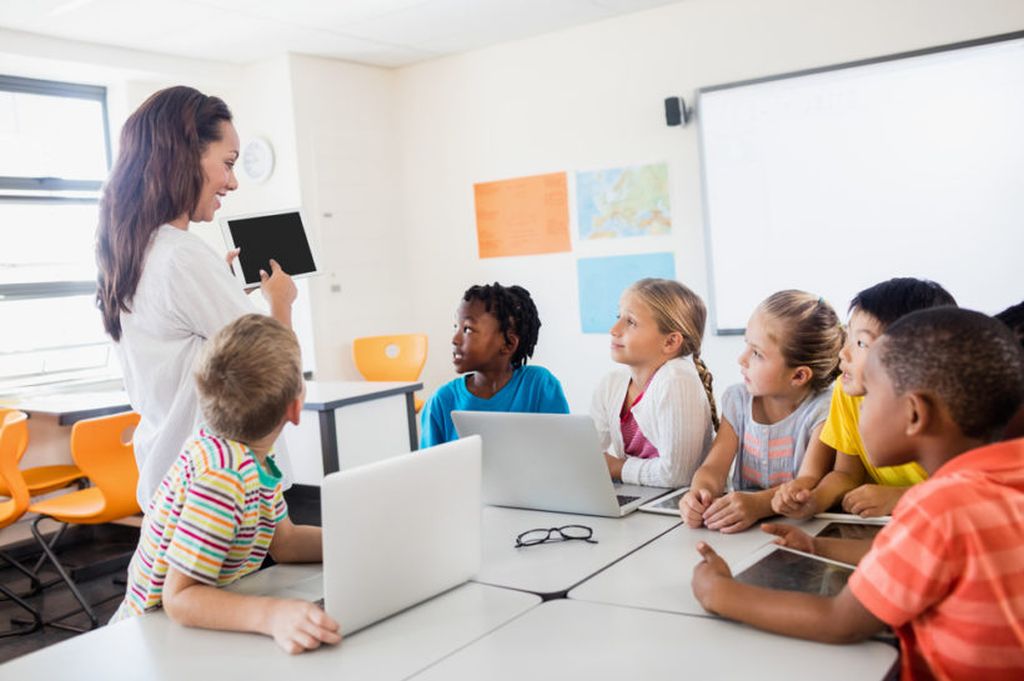Try Eduvacancy Today!
Get more out of Eduvacancy. Get full access to our
wide range of features!

Get more out of Eduvacancy. Get full access to our
wide range of features!


In an era driven by technological advancements, the role of teachers extends beyond traditional methods, opening new avenues to enhance the learning experience. Integrating technology into the classroom not only engages students but also equips them with essential skills for the future. Let's explore how teachers can leverage technology to revolutionize education in schools.
1. Interactive Learning Platforms:
Embrace digital learning platforms that offer interactive content, quizzes, and multimedia resources. Platforms like Khan Academy, Quizlet, or Google Classroom provide teachers with tools to create engaging lessons, track student progress, and tailor learning experiences to individual needs.
2. Gamification for Engagement:
Gamify the learning process to make education more enjoyable. Educational games and apps, such as Kahoot! or Prodigy, turn lessons into exciting challenges. This fosters healthy competition, boosts participation, and ensures students grasp complex concepts in a fun way.
3. Virtual Reality (VR) and Augmented Reality (AR):
Transport students to different times and places through VR and AR. Virtual field trips, historical simulations, or science experiments in a virtual lab immerse students in the subject matter, making learning more experiential and memorable.
4. Personalized Learning Paths:
Utilize adaptive learning platforms that cater to individual student needs. These platforms analyze students' strengths and weaknesses, tailoring lessons to their pace and learning style. This ensures that no student is left behind, promoting a more inclusive education environment.
5. Collaborative Tools:
Foster collaboration among students using tools like Google Workspace or Microsoft Teams. These platforms allow real-time collaboration on projects, facilitating teamwork and communication skills that are vital in the modern workplace.
6. Flipped Classroom Approach:
Implement the flipped classroom model, where traditional teaching methods are reversed. Students review instructional content at home through videos or online materials, and class time is utilized for discussions, problem-solving, and hands-on activities. This maximizes classroom interaction and engagement.
7. Continuous Assessment with Technology:
Move beyond traditional assessments with online tools that offer immediate feedback. Platforms like Socrative or Kahoot! not only assess student understanding in real-time but also provide valuable insights for teachers to adapt their teaching strategies.
8. E-books and Online Resources:
Say goodbye to heavy backpacks and embrace e-books. Digital textbooks, online articles, and educational apps provide students with a wealth of resources at their fingertips. This not only reduces the environmental impact of traditional textbooks but also allows for dynamic and updated content.
9. Professional Development through Webinars and Online Courses:
Empower teachers with continuous professional development opportunities. Webinars, online courses, and collaborative platforms enable educators to stay updated on the latest teaching methodologies, technology trends, and best practices in education.
#Education #Teachers #BuildCareer
#Education #TeachingStrategies #ClassroomManagement
#Education #Students #CellPhones
#Education #TeachingStrategy #Grading
#Education #LearningStrategy #PersonalizedLearning
#Education #PersonalizedLearning #Classroom
#Education #TeachingStrategy #Metacognition #Classroom
#Education #Effective #ClassroomManagement
#Education #Grammar #CivicEngagement #SupportOnlineTeaching
#Education #Impact #Schools #Society
#Education #GoodSchoolRequirements
#Education #Education #OfflineClasses
#Education #PublicSchools #PrivateSchools
#Education #EducationPolicy
#Education #BuildCommunity #Classroom